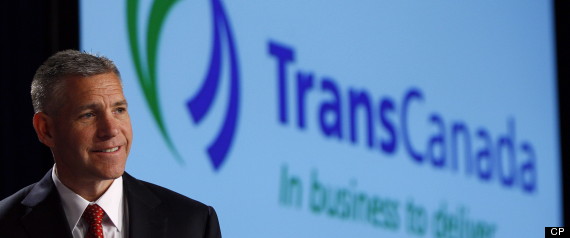 CALGARY - TransCanada Corp. is changing the way it tackles new projects, having learned the hard way how politics can affect construction schedules and costs, CEO Russ Girling said Monday.
CALGARY - TransCanada Corp. is changing the way it tackles new projects, having learned the hard way how politics can affect construction schedules and costs, CEO Russ Girling said Monday.In a year-end interview with The Canadian Press, Girling said the company won't start procuring materials or securing land for pipelines until it knows for sure it has regulatory approval in hand.
TransCanada (TSX:TRP) has already sunk $2.5 billion into its controversial $7.6-billion Keystone XL pipeline, which has yet to be awarded a federal U.S. permit after a litany of delays and setbacks.
"We won't make that mistake again," said Girling.
It used to be that the company could line up its materials and land in parallel with the regulatory review, meaning the whole process from conception phase to startup would take two or three years.
Now, that time frame is more like six or seven years, Girling said.
In the past, the regulator was mainly concerned with how the pipeline could be built in the safest way possible. While it may have imposed some conditions, companies could expect a permit by the end of it, he said.
Now the main question regulators are asking seems to be whether pipelines should be built at all, Girling said.
"You don't know whether you'll get a permit or not. You can't sort of embark on spending the money or starting your land negotiations."
TransCanada recently embarked on a project to connect natural gas to a proposed export terminal on the B.C. coast and so far the company has spent a lot of time on the ground engaging with local communities.
If there was one thing TransCanada learned from the Keystone XL experience, Girling said, it was that "you probably can't do enough of that."
In the past, that project could have come on stream by 2015, but now it will take until between 2018 and 2020, Girling said.
He said the longer project timelines are going to have consequences.
"If we can't react to society's needs within a period of six or seven years, what kind of safety issues does that impose? What kind of cost issues does that impose on the economy? They're quite dramatic."
Just under a year ago, the Obama administration rejected the initial iteration of Keystone XL, which would have connected oilsands crude to Gulf Coast refineries, but said TransCanada was welcome to reapply.
TransCanada then decided to break the project into two parts, since only the northern portion crossing the Canada-U.S. border needed a federal permit to go ahead.
The more urgently needed southern portion, connecting an oversupplied storage hub in Oklahoma to Gulf Coast refineries, is about 35 per cent complete, Girling said.
In May, the company filed a new application for the northern portion, which will include a revised route through Nebraska to avoid ecologically sensitive areas. A final decision on that pipeline is expected early next year.
Original Article
Source: huffington post
Author: Lauren Krugel
No comments:
Post a Comment